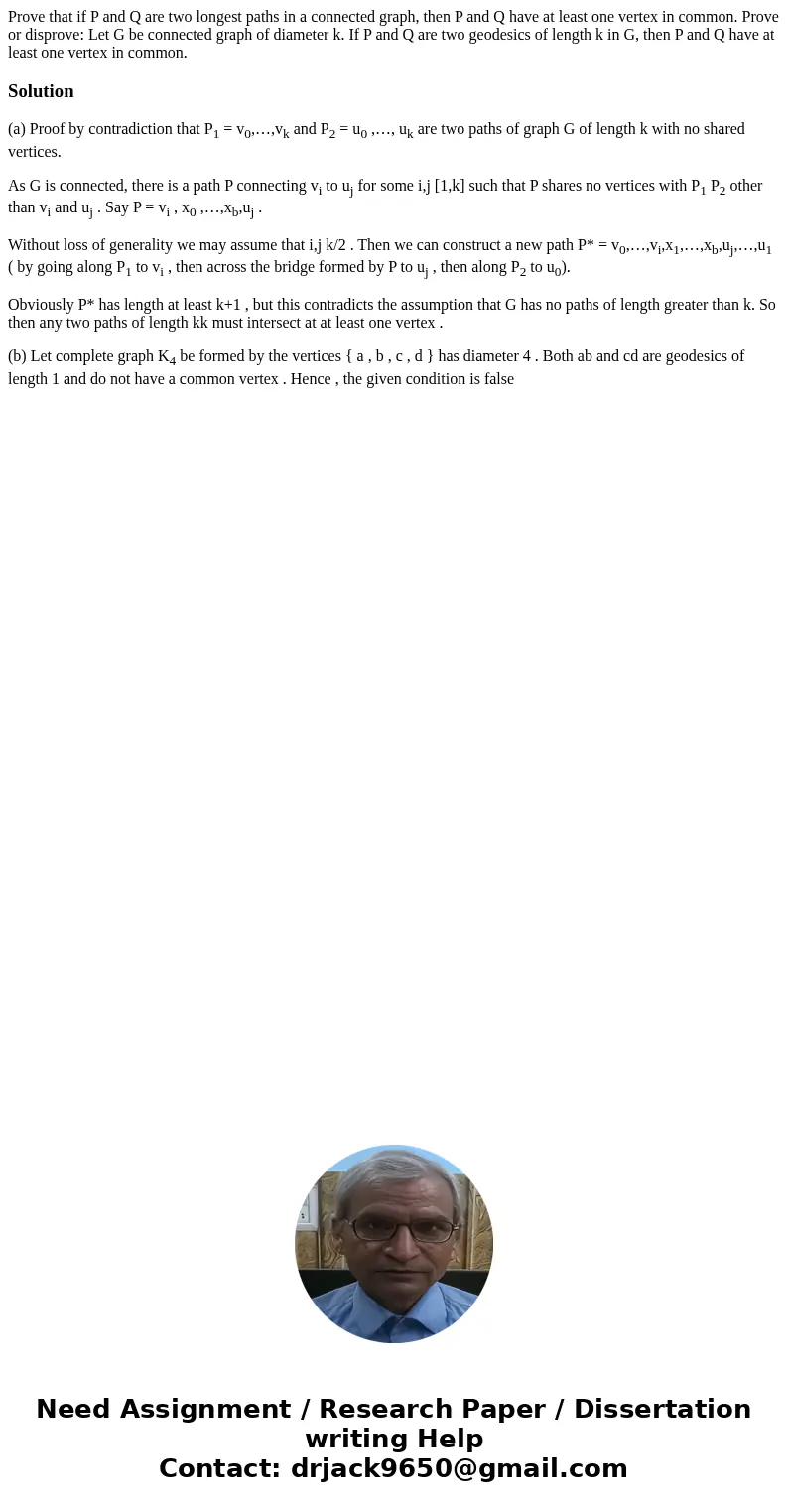Prove that if P and Q are two longest paths in a connected g
Solution
(a) Proof by contradiction that P1 = v0,…,vk and P2 = u0 ,…, uk are two paths of graph G of length k with no shared vertices.
As G is connected, there is a path P connecting vi to uj for some i,j [1,k] such that P shares no vertices with P1 P2 other than vi and uj . Say P = vi , x0 ,…,xb,uj .
Without loss of generality we may assume that i,j k/2 . Then we can construct a new path P* = v0,…,vi,x1,…,xb,uj,…,u1 ( by going along P1 to vi , then across the bridge formed by P to uj , then along P2 to u0).
Obviously P* has length at least k+1 , but this contradicts the assumption that G has no paths of length greater than k. So then any two paths of length kk must intersect at at least one vertex .
(b) Let complete graph K4 be formed by the vertices { a , b , c , d } has diameter 4 . Both ab and cd are geodesics of length 1 and do not have a common vertex . Hence , the given condition is false

 Homework Sourse
Homework Sourse